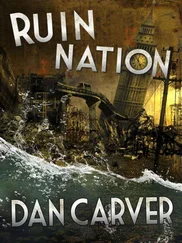The statements from the Impris riggers will be examined in detail in the main body of this report. In brief, however, they concerned two distinct, but possibly related, classes of phenomenon: 1) a series of unexplained sightings of ships in the Flux; and 2) a series of difficulties experienced by the crew in returning from the Flux into normal-space.
The sightings, three in number, came to be referred to by the Impris crew as “ghost ship” sightings. The ships, while bearing markings of known worlds, appeared only briefly and did not respond to efforts at communication, nor could all riggers in the net confirm the sightings. The riggers came to describe these events as sightings of the “Flying Dutchman”—a reference to ancient legends of a haunted seagoing ship, a vessel doomed to sail through eternity with neither port nor rest nor hope.*
Was this a whimsical designation, reflecting the imaginary nature of the sightings? Or was it a truthful and accurate observation of a ship or ships caught in some dreadful layer of the Flux, unable to reach port or even respond to communication?
————————
* References to the Flying Dutchman are hardly new to star rigging. The legendary ship Devonhol has long been a part of rigger lore, despite the lack of historical evidence for the existence of such a ship.
Most of this material was familiar, so Legroeder skipped ahead to the main body of the report. Fandrang and Lee had conducted extensive interviews with her rigger crew and captain. Fandrang noted that even after in-depth analysis, he found it impossible to draw conclusions. Nevertheless…
We found surprising consistency in the sightings, even when reported by different sets of riggers on separate occasions—similarity in the sudden but fleeting manner of the other ships’ appearances in the Flux, in the reception of faint distress calls, and in the subjective impressions of there being something wrong aboard the ghost ships—specifically, a sense of a “living presence” within the ghost ships, as though there were live riggers in the other ships’ nets straining to reach out to make contact…
Captain Friedman regarded these sightings as significant in terms of the psychology of his own rigger crew—thus his request for outside consultation—but he discounted their reality in physical terms. (See Appendix A: “Captain Friedman Interview.”) It was the captain’s belief that a pattern had developed within the rigger crew’s imaging, predisposing them to “see” things like ghost ships during certain kinds of Flux transition. His concern was more for the possibility of group hallucination among the rigger-crew, with attendant risks to the safety of the ship.
Our own survey of the Impris rigger-crew supported no such concerns at the time—though of course now, with the disappearance of the ship, we must reconsider all possibilities. (See Appendix B: “Rigger Interviews 1-17.”) We found all members of the crew to be clear minded, cooperative and helpful—at least within the bounds of normal rigger variance. Several were rather private individuals, a common enough trait among riggers, and several exhibited low levels of anxiety concerning our presence and the matter we were investigating. However, none of these observations caused us to consider detaining the ship in port or to request replacement crew. Indeed, we felt that it was a fine crew.
What did concern us was the possibility of some physical effect arising from repeated passage through the interstellar Flux. This is a vaguely stated concern, but it is difficult to be more precise without further data. Could problems be traced to certain regions of the Flux? If so, why were similar problems not noted on other ships? Were the difficulties experienced in exiting the Flux (Appendix C: “Prior Navigational Anomalies”) somehow related to the sightings, real or imagined, of the ghost ships? These were among the questions we sought to answer.
Legroeder read with growing interest. The navigational difficulties Fandrang referred to mostly seemed to involve transient conflicts of imagery in the net. Shared imagery, of course, lay at the core of flight with a multi-rigger crew. One rigger had described a tenuous feeling in the net, a temporary difficulty in finding anchor points in the Flux. This reference was not to physical points in space or time, but rather intuitive compass points in the minds of the riggers. Without such anchors, riggers would find it impossible to make navigational connections back to normal-space.
Legroeder skimmed ahead, looking for an explanation. He found, not an answer but a suspicion, further into the text.
“What’s he talking about with these EQ levels along starship routes?” Harriet asked, peering over the top of her glasses. Apparently she had reached the same section.
“EQ is an old mathematical expression for energetic turbulence leaking into the Flux from black holes, star formation, matter annihilation, that sort of thing. No one uses the term much anymore. It was an approximation for something no one quite understood.”
“Do they understand it now?”
“Well—we’re using different measurements now. It’s still an imperfect science. From what I hear, the Narseil come closest to having a good theoretical understanding.”
“So maybe they should have been brought in on this investigation?”
Legroeder stared back at her reflectively. “Yeah, maybe. Except… they got blamed for it, right?”
“Ah. Yes,” Harriet said.
Legroeder continued reading.
…in comparing the flight histories of Impris with those of other ships flying well-established routes, we found Impris crews experiencing a 37 percent higher-than-mean EQ exposure. In fact, the very stability of the crew during her final year resulted in even greater EQ exposure than the “average” Impris crew over the ship’s lifetime.
Tables followed, which Legroeder only glanced over. He hadn’t looked at this sort of thing in a long time, and it hadn’t gotten any easier to read over the years. He pushed ahead to the conclusions.
No intimations of carelessness or negligence should be inferred from these findings. All flights appear to have been conducted within lawful limits; nevertheless, the fact emerges that the flight paths of Impris ’s normal runs did expose her to areas of relatively high EQ.
One important factor may turn out to be the star-birthing region of the Akeides Nebula—a navigational “caution point” along the route between Karg-Elert 4 and Vedris IV, and a sightseeing attraction for passengers. Though unquestionably a beautiful sight, one must ask: is the nebula also a hazard to those who pass by it? This report draws no conclusions, but we believe the matter deserves further study—not just with respect to the Akeides Nebula, but EQ exposure in general. More will be said about this in Section 4…
At this point, the report shifted to a history of the Fandrang/Lee investigation, including logs of the observation flights. Legroeder flipped through the pages awhile, then sat gazing into the fire in the fireplace, lost in dark thought on the possibility of there being something in the Flux, something unidentified, that could so drastically interfere with a rigger’s ability to find his way among the stars.
“Legroeder? What do you make of it?” Harriet had a troubled expression on her face.
He turned from the fire, shrugging. “I wish I knew.”
“Well, you’re the rigger. Does this stuff seem plausible?”
“Which? The ghost ship sightings? The EQ readings?”
“Any of it. All of it.”
Legroeder sighed. “Who can tell? But if any of it is true, then riggers need to know.”
Читать дальше












